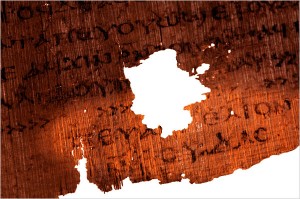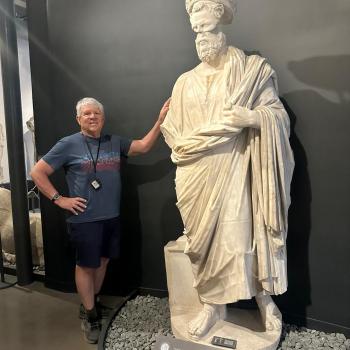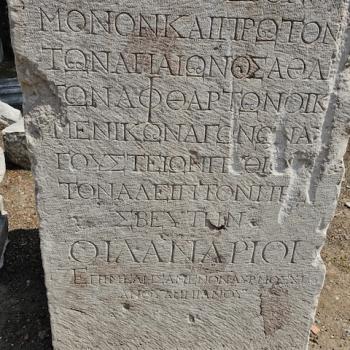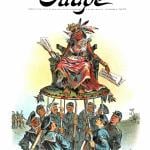When we think about the roles of professional scribes, it is important to bear in mind that slaves could be scribes. This is because as the Roman Empire spread, lots of well educated people were conquered and sold into slavery. Thus the the distinction we might make between professional scribes and private copying when it comes to NT manuscripts may well not apply. A person who was of low status such as a slave, in regard to his personal freedom, might at the same time be a person of elite status when it came to his literacy, his ability to read and write. He might even have previously been a professional scribe working in a royal court or temple somewhere. Thus the following notes on Johnson’s study become germane to how we think about ‘amanuenses’ or scribes such as Tertius mentioned in Romans 16.
Scribal professionalism is what accounts for such regularity in things like column width, and it also suggests that the large majority of documents of a non-mundane sort, like say a receipt, were copied by professional scribes. There were standard techniques for copying literary works.
Clues to an unprofessional copy— a bookhand or fair hand is not used, and abbreviations are used. The horizontal line of writing is often uneven. Column widths vary and are irregular. The left edge of the column is uneven. The slant of the letters is not uniform. The work is written on the verso of a reused piece of papyrus (though scribes did do the latter when necessary). Now these standards can be applied when examining early second and third century NT fragments. Do they betray the work of an unprofessional copier or a professional, trained one? Many of them seem to be of the latter sort, which suggests that scribes were some of the people who were early Christians and became important in the evangelistic movement due to their ability to produce or reproduce important Christian documents.
p. 158— Johnson stresses there is no evidence there were scriptoria in antiquity that mass produced documents and a hard and fast distinction between the book trade and private copying doesn’t work. Yes, the wealthy did have scribes copy something for a small circle of friends or colleagues, but they also turned things over to the bookseller for copying as well. Elite Romans did not copy lengthy documents themselves. We need to be careful, when it comes to Christian documents, not to predicate later monastic practice, such as setting up a scriptorium in a monastery, to the earliest period of Christian history. The monastic movement was only getting started in the 2nd and 3rd centuries A.D.
p. 159 Johnson says “In antiquity, a ‘bookseller’ engaged in the ‘book trade’ need be no more than a scribe on a public corner with his chest” (see Catullus 14). The central role of the scribe is clear from the Latin word ‘librarius’ which refers to both the copyist and bookseller throughout antiquity. Shops did exist that maintained some master copies of standards works (see Horace Ep. 1.20 for an early example and Martial 1.117 for a later one). But these made most of their money surely from copies made to order. “We [should] try to re-imagine a librarius not as a bookseller [in the modern sense] but as a scribe or a scribal shop that performs multiple functions: copying books to order from the (few) master copies maintained in stock; copying books to order from master copies furnished by the customer from a personal library; copying books to order from a master copy derived from a public library; selling used books, including those from auction; perhaps rarely… making multiple copies in advance for books thought to have ready customers” [e.g. Virgil’s Aeneid or Homer’s Odyssey].
The proper distinction when it comes to copying books is not between individual and trade, or private and public, but between private and professional. But even here the distinction is blurred because the wealthy could own a slave who was trained as a professional scribe. Thus
p. 160 Johnson finally suggests the distinction between trained and untrained copyists. When it comes to literary works, there seems to have been little copying of whole literary texts by the untrained, as opposed to the case with commentaries or subliterary texts. Partly this is because of course bookrolls and later codices were status symbols of the elite, and served as cultural icons which function was as important as their contents in certain contexts. Sometimes literacy rates which were low when it comes to actual reading competence of literary texts has led to the assumption that book production must have been slight. This hardly accounts for the evidence of hundred and hundreds of rolls and fragments written by hundreds and hundreds of scribes. Someone read these documents or owned these documents and had them produced, and it wasn’t just rulers either or even just the elite. There were also teachers, students etc.













